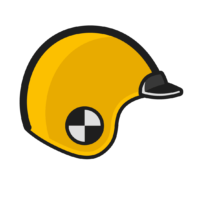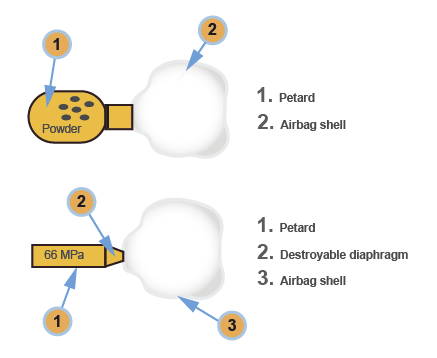Smart safety airbag. Patent activity. Adaptive airbag.
RPE ISTA has experience of selling rights to its intellectual property and is currently interested in selling rights to its own patents of the Russian Federation, the US and Germany, which protect the adaptive airbag of a vehicle.

The company has 20 years of successful developments patenting. Even without considering the commercial effectiveness of patent property, we consider this work important and necessary, because in the process of patenting, strong and weak points are revealed against the background of competing products, and the presence of a patent of its own characterizes objectively the high level of technology.

Currently, the company is interested in selling rights to its own patents of the Russian Federation, the United States and Germany, which protect the adaptive airbag of the vehicle.

If we equip any known airbag inflator with high-speed KB valve, it becomes possible to reduce the impact load by half due to the redistribution of the load.
The company has a working laboratory sample that proves the effectiveness of the invention, as well as the team of specialists able to carry out the necessary R & D to create an industrial prototype.

Current inflationaries contain either a chamber with solid fuel (gunpowder) emitting nitrogen when burning after ignition with firecracker or compressed in the receiver gas that expires after the diaphragm ruptures. Both options are not adaptive to correction signals during an accident.

Our proposal is to equip both the powder-like gas version of the inflators with a high-speed valve, which, in order to provide the required airbag scenario, provides the required number of switches during the development of an accident by the signals of the on-board computer.



The graph from the journal European Automotive design presents three curves obtained as a result of numerical simulation. The red curve characterizes the impact load in the work of non-adaptive airbag. The blue curve with flow control with a characteristic switching time of -29 ms, the green – 2 ms.
In our laboratory sample this time is approximately 5 ms, so the corresponding load curve will run between the blue and green curves.
